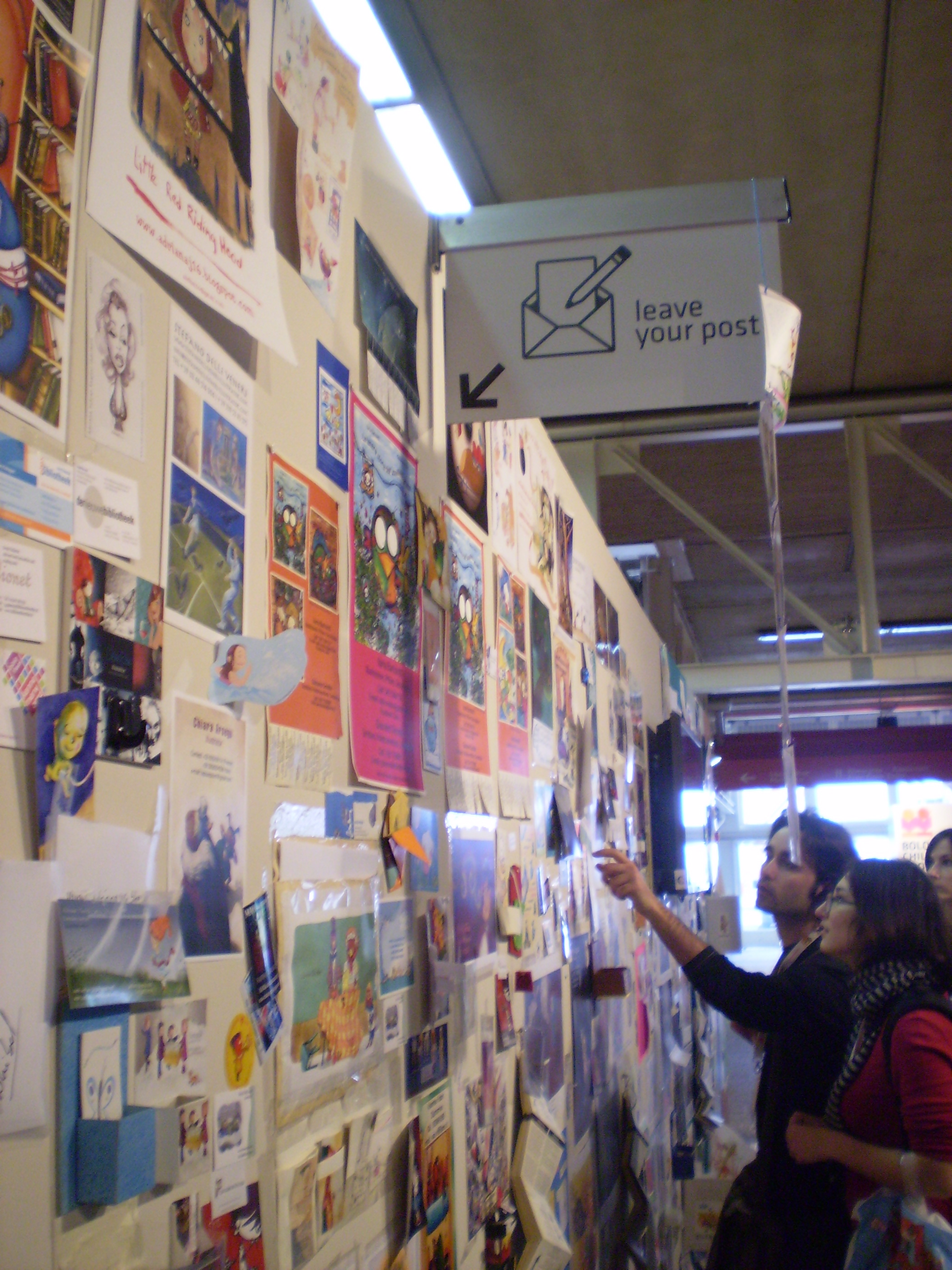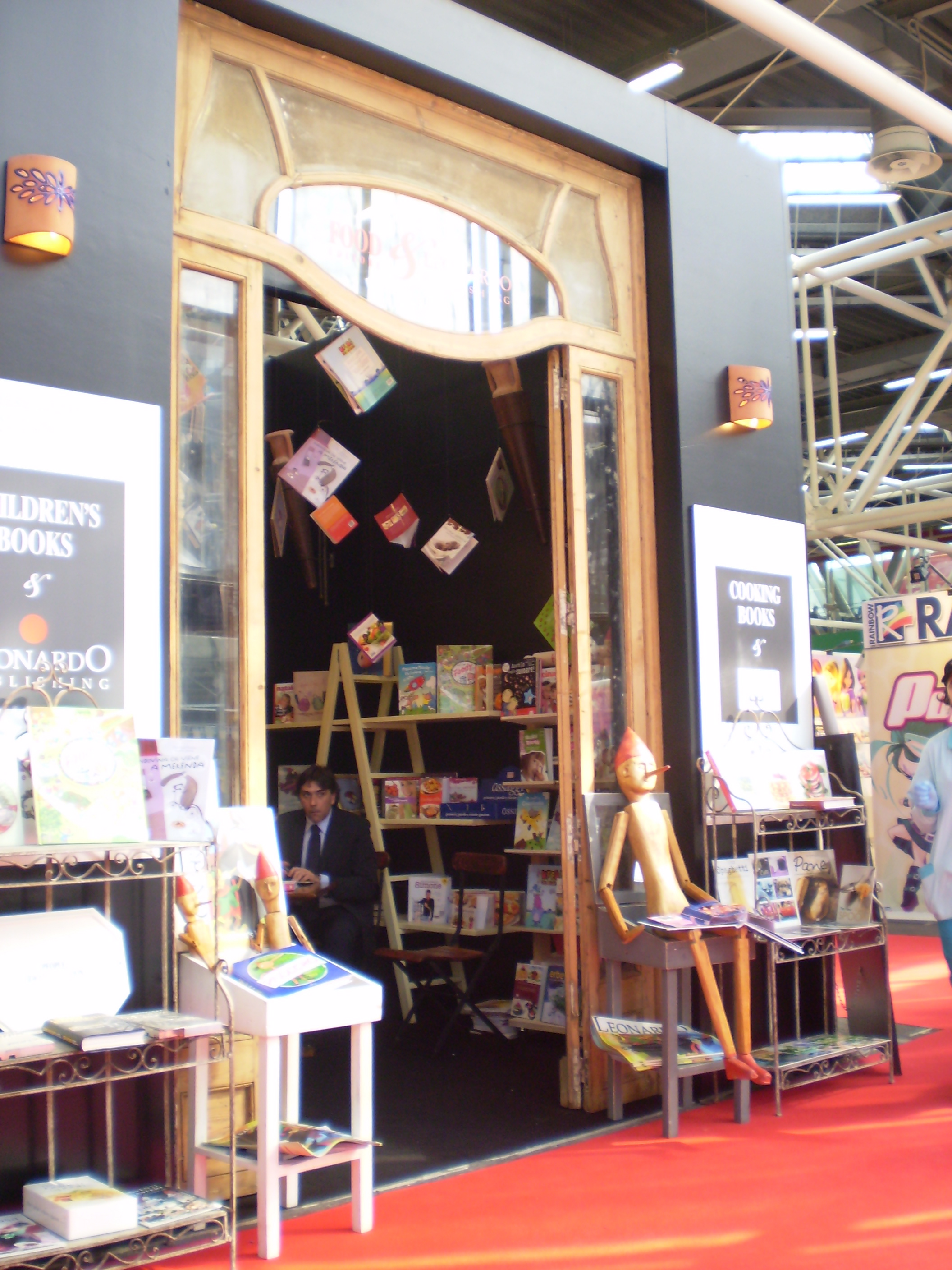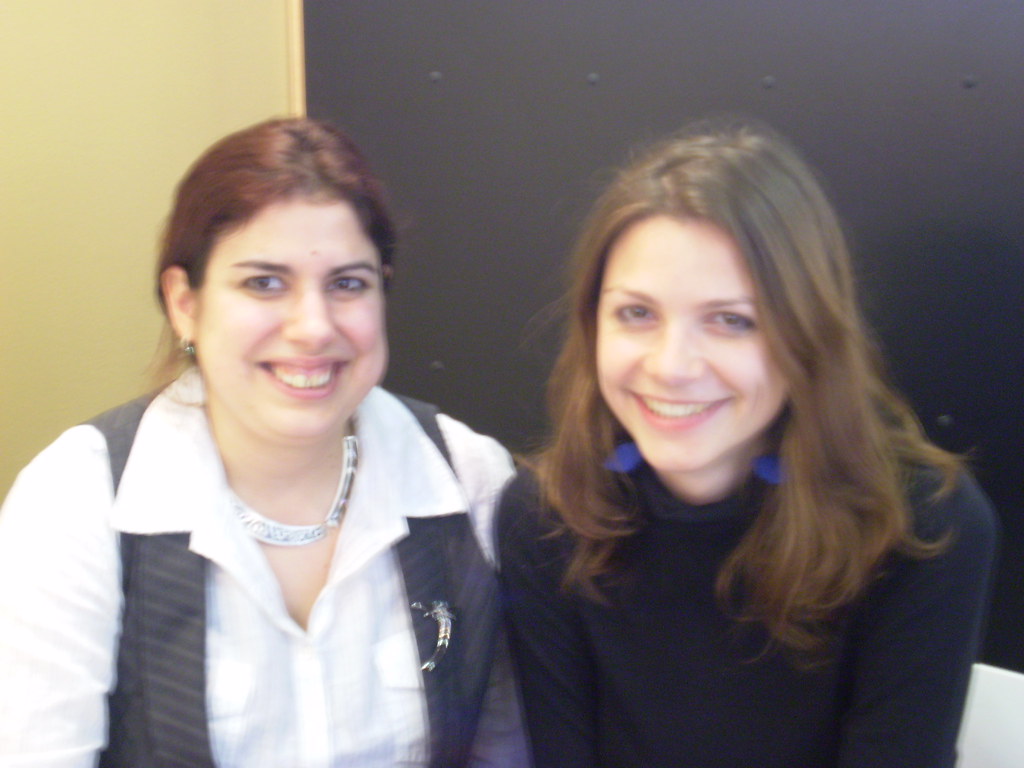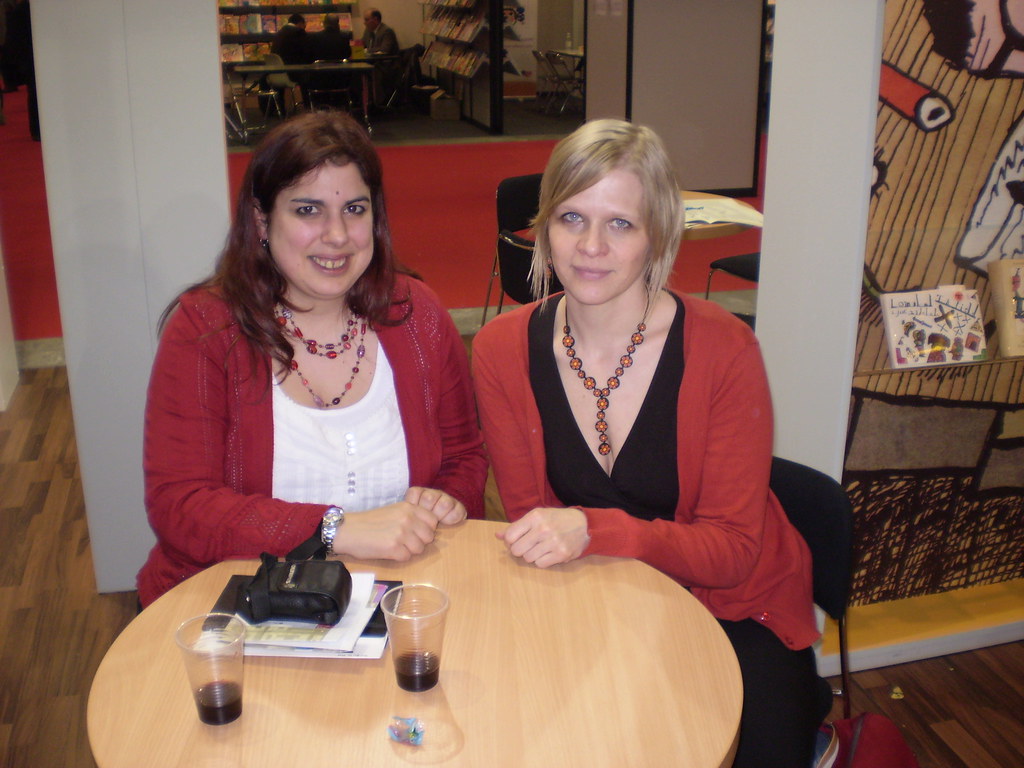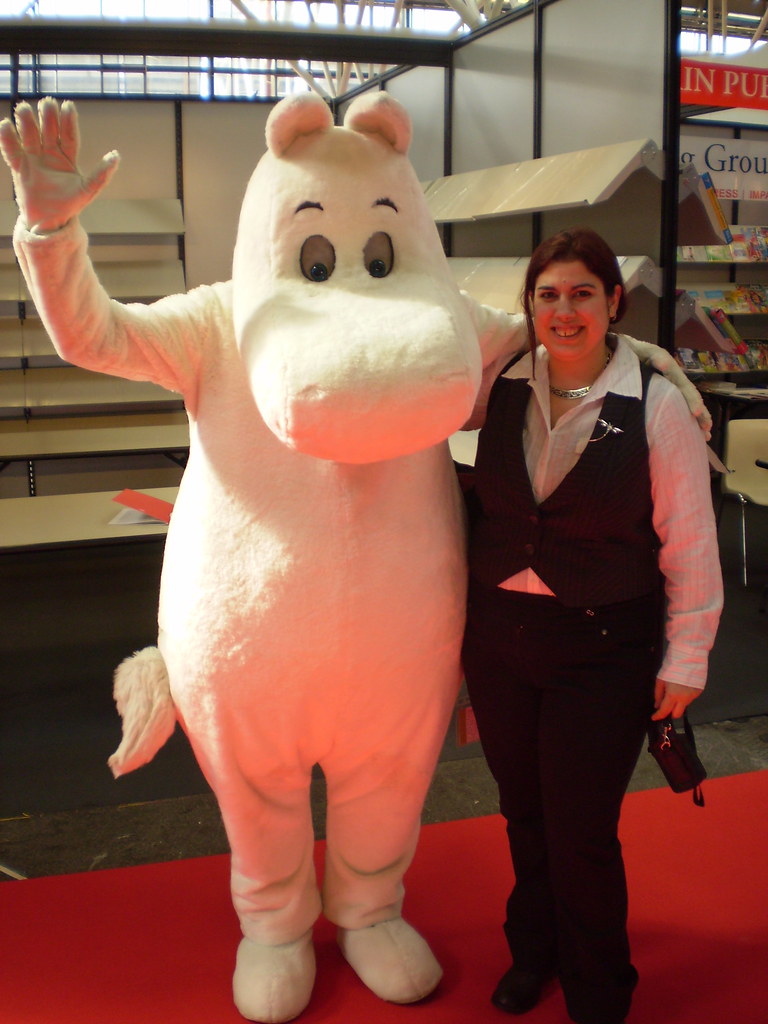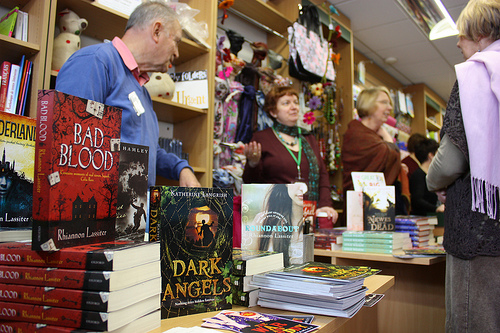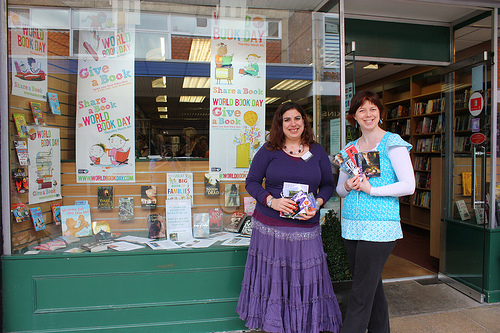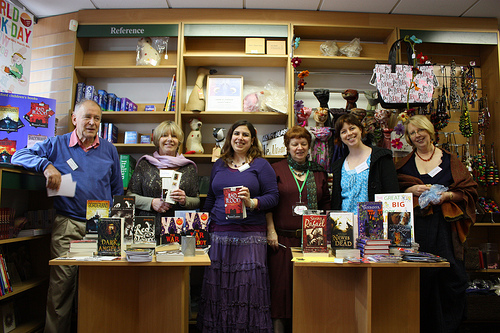A couple of weeks ago I did an essay piece and an interview with Polish website Crime in the Library.
Essay is here
Interview is here
I’ve since also been interviewed by another Polish website called Carpe Noctem. I’ll publish the details when I have them. It’s great that Bad Blood (Wykreślone imię in Polish) seems to be doing so well. This is the first time I’ve been published in Poland. If you’re a Polish visitor to my blog or website let me hear from you.
Here’s the short essay and the questions I was asked, in English, for English readers who’d like to see them.
How I wrote Bad Blood
I was staying in the Lake District in a house that belonged to a friend of the family. It was an old house with narrow staircases leading up to attic rooms with sloping walls and everywhere, against every wall and piled up in the corner of the staircases, were books. There was also a door that led into an unexpectedly large playroom. I started thinking about story ideas with hidden rooms and long buried secrets.
The story is about a blended family, two children from the mother’s side and two from the father’s. I was trying to think of names for them and came up with very similar names for the two girls: Catriona and Katherine. I thought I would have to change one of those names because readers might be confused and then I realised that in a real family there might be exactly the same confusion, especially if the two girls had very similar nicknames: Cat and Kat. I’d already been thinking about names in a more sinister context and this idea made the family dynamics come to life for me.
This is a book about the power of the imagination and about the ways in which your own mind can trick you. Each of the characters has cause to doubt themselves and to doubt each other. One is afraid she might lose her mind, another is afraid of losing her place in the family. Roland, the oldest boy, is trying to find some kind of balance for himself in a tempestuous quarrelsome group of people. Romance also plays a part in my story but I wanted to show that romantic idealism can be more romantic in the imagination than when it comes to life in reality and that love and obsession are very different emotions.
Bad Blood is a multi-layered narrative. It draws from fiction and myth and the landscape of imagination but also from a contemporary situation, modern experiences and real emotions. It’s about make-believe games but also about the beliefs we make true.
It took about two years for me to write and it wasn’t an easy book for me. There was so much I wanted to put into it and so many ways to tell the stories I wanted to tell. I think that it’s the book that’s come the closest to my ambition for it, to expressing the story I wanted to tell. It has some of the magical realism of my fantasy novels but is rooted in a real place like my contemporary fiction. Ultimately I was very pleased with how it turned out and with the critical reception it has received.
Questions and answers
Your mother is a writer. Did she make you write too?
Both my parents read to me and talked about books for as long as I can remember. Having a mother who is a writer certainly made me aware of the life of a professional writer but it wasn’t just because my mother is a writer that made me a writer too. I have two sisters and one is an architect and the other works in the theatre and although we’re all interested in books we’re not all writers.
You were very young when your first novel “Hex” was published. When did you decide to become a writer? And why?
I was just starting at university when Hex was accepted for publication. At that time I wasn’t planning to be a writer. I wrote because I enjoyed it and I submitted the book for publication because I thought it might be good enough to get published. I didn’t actually decide to be a writer until I’d been writing for over a decade – by then I couldn’t deny that I was a writer.
You live and work in Oxford. Is this town a good place for writers?
Oxford is a wonderful place to live. It’s a small city so I’m near to the countryside and it has a strong cultural, political and social life. I have friends here and my current publishing company, Oxford University Press, has offices here. There are lots of active writing and writers groups, schools and libraries to visit and two universities.
But I think that any place is good for writers. I have been inspired by all sorts of places. Bad Blood is set in the Lake District and the book is full of imagery inspired by the place I stayed and places I visited there.
You’re the author of many books (9 novels?). But we know only “Bad Blood”. Could you tell us shortly about your novels and short stories, please.
My first books were the Hex trilogy, that’s a science-fiction series about humans with a mutant ability to interface with computers. It’s a very action-based trilogy with gun fights, kidnappings, political protests and dramatic chases and escapes. In these books the hero is a young girl called Raven who is isolated from other people because of her abilities and her personality which makes her reluctant to trust anyone.
Since those books, I’ve written several different kinds of novels. My Rights of Passage series (Borderland, Outland and Shadowland) is a blend of science-fiction and fantasy about a group of teenagers who find a way to travel to other worlds. It’s in some ways a response to C.S. Lewis’ Narnia series because my characters are much less honourable and self-sacrificing. Many of them see other worlds as opportunities to be exploited.
I’ve also written a magical realism novel called Waking Dream about three cousins who enter the landscape of dreams and are called on a mysterious quest which, like much of what happens in dreams, isn’t quite what it seems.
I’ve written one very contemporary fiction novel called Roundabout, set in a Traveller community which is threatened by the local government’s plans to build a roundabout where they live.
I’ve also written two shorter novels for younger readers (Super Zeroes and Super Zeroes on Planet X) about the children of a team of superheroes – and super villains. In these books the children are the real secret heroes, solving problems behind the back of their more glamorous parents.
I’ve had three short stories published in anthologies, the third anthology was Lines in the Sand: New Writing on War and Peace, a collection I co-edited with my mother Mary Hoffman. I’ve also written a non-fiction book about the supernatural.
Why do you write books for young readers? Is it more difficult to write for them than for adults?
I write the books I want to write. They’re mostly sold as young adult titles because that’s the age of the characters but I write for anyone who enjoys reading. Adults also read my books and tell me how much they’ve enjoyed them. I remember what it was like to be a teenager and I don’t think I’ve changed all that much so it’s not too difficult for me to imagine stories from the point of view of a child or teenager and to think about what might appeal to a reader that age.
I’ve not yet written a novel aimed primarily at adult readers or with completely adult characters. I’m sure I will someday, but I have to find the right story first. I don’t want to write just another book – I want to find something new to write about.
You are a professional writer now. Could you describe how is your workday looking like? Do you work every day? How long? Etc.
I currently have another job as well as writing and that’s changed the shape of my working day. But there are certain days I set aside to write. I have my own study room which I designed myself and that’s where I’m sitting now and answering these questions.
When I’m writing there are no strict rules. I might write for a couple of hours or all day and into the night. When I’m inspired with an idea it’s hard to stop writing but sometimes I don’t feel as inspired and then I might stare at a blank page of my notebook or at an empty screen for a long time, trying to find the right words.
As a writer do you have any habits/rituals? (e.g. a glass of wine for the end of work?)
I have some little rituals. One is that I always start a new novel in a different font – one that feels right for the kind of book. So sci-fi novels have sans serif fonts and fantasy ones have serif fonts. I know that sounds a little strange.
I enjoy a glass of wine at the end of a working day! I also like to phone my friends or my mother and discuss ideas with them.
What’s the quality most important to your success as a writer?
I think that what has made my books successful is that I try very hard to write characters who behave like real people, who talk to their friends or their families in a believable way. My characters aren’t natural heroes, they have doubts and fears, When they succeed it’s as much in spire of themselves as because of the qualities they possess. I think that makes them feel more real.
Do you like it when your readers are scared?
If the book is supposed to be frightening then I’m pleased that readers are scared. It’s a wonderful and terrible power to be able to frighten people with a story you’ve invented. I like it when my words achieve what I intend.
How did you get the idea for “Bad Blood”?
It was a combination of visiting an old house in the Lake District which was full of books and the surrounding scenery of the hills and fields that started me thinking of a story. I think of story ideas all the time but this one kept growing the more I thought about it.
What do you think are the basic ingredients of this story?
It’s a story about families and about identity, about claiming your own name and your own vision of yourself. It’s also a story about books and about imagination and ideas that you can get carried away with, frightening thoughts and nightmares that you can’t let go of.
Do you like the cover of “Bad Blood”?
I do. I think it’s a very dark strong cover that makes people want to find out more about the book.
What do you like to read? What is your favorite genre? What are your favorite books? Which authors dominate your bookshelves?
I will read almost anything but my favorite genre is science fiction. I like writing which stretches the imagination and explores the boundaries of possibility. One of my favorite books is The Dispossessed by Ursula Le Guin. It’s a complex story of science and politics and war told in an unusual way. I admire Le Guin very much and have lots of her books. I also enjoy Diana Wynne Jones and own almost all the books she’s written. A Tale of Time City is one of my favorites; it’s full of imagination and humor and drama all at once. I have many books by Isaac Asimov, Stephen Brust, Alan Garner, Tanith Lee, Terry Pratchett, Melanie Rawn, Neal Stephenson, Joan D. Vinge and Vernor Vinge and John Wyndam.
I list books I own on the website Library Thing. You can see more about my favorite authors and how I’ve rated books there.
What type of reading inspires you to write?
I probably admire really good literary fiction (of any genre) the most. I’ve been inspired by books like The God of Small Things by Arundhati Roy and Never Let Me Go by Kazuo Ishiguro.
What are you working on now? What’s your writers plan?
I’m revising a book called Ghost of a Chance, a ghost story for Oxford University Press and I’m deciding what type of book to work on next. I have ideas for a book about an ecological community and for one about princesses.
What do you do when you don’t write?
When I’m not writing I like to read! I also play computer games: everything from The Sims to Unreal Tournament.
Do you like to meet with readers of yours books? Does reader feedback help you?
Of course! I love to hear from readers. People can contact me through my web page, my Facebook or on other social network sites. I like to know what people thought of my books and the particular parts they enjoyed. I find criticism helpful too when it comes from someone who has really thought about the book.
When will you arrive to Poland? 
When I’m invited! I’d love to visit Poland and perhaps if I’m lucky my publishing company will be able to organize a visit.

